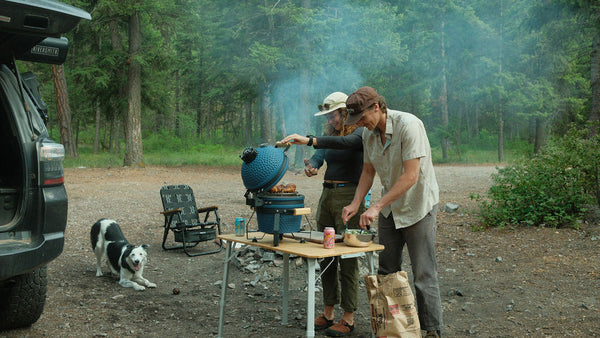
Advanced Techniques for Smoking Meats with Precision
Mastering BBQ smoking is more than just a passion—it’s a blend of science, precision, and pitmaster intuition. For those ready to move beyond the basics, advanced meat smoking techniques unlock legendary tenderness, perfect bark, and deep smoke penetration. This guide explores the secrets of precision smoking BBQ and the nuanced skills that separate good cooks from true pitmasters.
Beyond the Basics: The Pillars of Advanced Smoking
True mastery in smoking comes from understanding and controlling every variable. The essentials include:
-
Temperature Stability & Manipulation: Maintaining steady low-and-slow heat (typically 225–250°F) is crucial for breaking down tough connective tissues and developing rich flavors.
-
Smoke Quality & Quantity: The type, density, and timing of smoke all shape the final taste and texture.
-
Moisture Management & Bark Development: Balancing humidity and surface drying is key to perfect bark and juicy meat.
-
Meat Preparation & Tenderness: Advanced prep techniques like brining, injecting, and expert trimming make a difference.
Vessils Kamado Grills, especially the 24-inch model, excel at precision thanks to their insulation and airflow systems. For setup, see the Vessils Smoking Setup Guide.
Advanced Temperature Management: The Heartbeat of Low & Slow
-
Hyper-Stable Temps:
-
Use the Minion Method or charcoal snake, fine-tuned with a Vessils Charcoal Basket for precise, long-lasting fuel layout.
-
Micro-adjust top and bottom vents for exact airflow—tiny changes can have a big impact in a kamado grill.
-
Monitoring Beyond the Dome:
-
Employ multi-probe smart thermometers to track both grate-level and internal meat temps in real time.
-
Understand and quickly correct temperature swings.
-
Troubleshooting:
-
Recover from spikes by partially closing vents; reignite dying fires by slightly opening them or adding fuel.
Optimizing Smoke Flavor: Crafting the Perfect Aroma
-
Wood Selection:
-
Mix woods for custom flavor (e.g., oak and cherry for brisket), and match wood density to cook length. Always use quality, food-safe wood.
-
For more, see "Choosing Wood Size: Chips, Chunks, Logs."
-
Thin Blue Smoke:
-
Aim for clean, nearly invisible smoke—achieved by proper wood placement, adequate airflow, and avoiding smoldering.
-
Dirty smoke (thick white/gray) leads to bitterness—avoid by using dry wood, correct fuel-to-wood ratios, and clean grills.

-
Smoke Timing:
-
Introduce smoke early for best absorption; less is more for long cooks.
-
Use a smoker box for precise control, especially on gas grills.
Mastering Moisture and Bark Development
-
Managing the Stall:
-
The stall is caused by evaporative cooling. Use the Texas Crutch (wrap with foil or butcher paper at the stall) to push through, or go "no wrap" for a thicker bark.
-
For brisket, see Smoking Brisket on a Kamado Grill Step-by-Step.
-
Moisture Control:
-
Place a large water pan on a Vessils Heat Deflector Stone for stable humidity.
-
Spritz with apple cider vinegar or broth to keep the surface moist and aid bark development.
-
Perfect Bark:
-
Combine proper rubs, airflow, and drying time. Fat rendering and smoke adhesion are key—see BBQ Rubs and Sauces for Smoking.
Advanced Meat Preparation
-
Brining:
-
Wet brine for poultry and pork; dry brine for brisket and ribs to enhance flavor and bark.
-
Injecting:
-
Use broths or seasoned liquids to add deep moisture and flavor, injecting with or against the grain for best results.
-
Expert Trimming:
-
Trim brisket for even cooking and better bark; remove rib membranes for tenderness. See Top 5 Pitmasters’ Secrets for Perfect Ribs.
The Crucial Final Steps: Probe, Rest, and Slice
-
Probe for Tenderness:
-
Go by feel (“like hot butter”) over just temperature.
-
Resting:
-
Let meat rest (wrapped in foil or butcher paper, in a cooler or oven) to reabsorb juices and maximize tenderness.
-
Slicing:
-
Always slice against the grain for optimal mouthfeel.
Troubleshooting Advanced Smoking
-
Over-Smoked Flavor: Use less wood, avoid late smoke, and ensure clean combustion.
-
Dry Meat: Lower temps, maintain humidity, and don’t overcook.
-
Poor Bark: Adjust rub, airflow, and surface moisture.
-
Inconsistent Temps: Check fuel load, airflow, and grill seals.
Conclusion: The Endless Journey of BBQ Perfection
Advanced meat smoking techniques are a continuous journey of learning and refinement. Precision in every step—from prep to rest—leads to extraordinary BBQ. Equip your journey with Vessils Kamado Grills and accessories for consistent, competition-worthy results.
